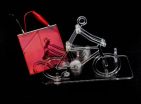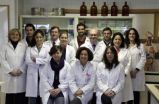(Press-News.org) Human breast milk is considered the most ideal source of nutrition for infants and it should have played a critical role in the evolution and civilizations of human beings. Unlike our intuitive perception, human milk contains a large number of bacterial species, including some opportunistic pathogens of humans. This phenomenon comes as no surprise to scientists and physicians.
Indeed, the existence of milk microbiome is considered to be the result of co-evolutionary and co-adaptive interactions between the microbiome and human host. Furthermore, the dynamic balance in human milk microbiome ecosystem could be fundamental for suppressing the opportunistic pathogens in the breast milk. Nevertheless, until very recently, the ecological analysis of milk microbiome has been limited to assessment of bacterial diversity such as species richness and Shannon diversity index, which is necessary for understanding human milk microbiome but is far from sufficient for understanding the assembly and maintenance mechanism of the breast milk microbiota. The latter is not only interested in by theoretical community ecologists, but also of important clinical significance for understanding the health and disease implications of the breast milk. For example, mastitis is inflammation of the breast with or without infection, and Staphylococcus aureus has traditionally been believed to be the pathogen that is typically associated with infectious mastitis.
Ma et al (2014 submitted manuscript) recently postulated that the opportunistic pathogen such as Staphylococcus aureus, which has been confirmed to exist in the human milk microbiome, is normally suppressed by a network of beneficial bacteria coexisted in the breast milk microbiome, but may become source of infectious mastitis when the host environment permits. Therefore, the breast milk microbiome, similar to the microbiome in the other human body sites such as gut microbiome and perhaps the macrobiome in nature such as lakes, oceans, forests, must maintain their ecosystem (dynamic) balances to stay healthy. Revealing the mechanism of microbiome assembly, succession and maintenance should offer important insights for understanding the health and disease implications of the break milk microbiome.
A study conducted by a group of scientists led by the University of Idaho Professor Mark McGuire [Hunt et al. (2011)] provided the most comprehensive 16s-rRNA experimental survey of milk microbiome to date, which offers an ideal dataset for studying the above-mentioned mechanisms. By reanalyzing Hunt et al (2011) 16s-rRNA data set, Guan & Ma (2014), from the Computational Biology and Medical Ecology Lab of the Chinese Academy of Sciences, applied Hubbell's neutral theory and Taylor's power law from macroecology to understand how the milk bacteria diversity are maintained and distributed. The power law analysis demonstrated the non-random and heterogeneous natures of both bacterial population abundance and species abundance distributions in the breast milk microbiome. Furthermore, all milk bacterial communities failed to fit to Hubbell's neutral theory model, indicating the possibility of niche differentiation and the presence of dominant species in the breast milk microbiota.
These results, for the first time, revealed that the bacterial diversity and distributions in the human breast milk are maintained by possible niche differentiation, and confirmed the role of dominate species in maintaining milk microbial diversity. Furthermore, both the single-species population abundance (at population level) and species abundance distributions (at community level) in the breast milk microbiome are heterogeneous and non-random. Niche differentiation, heterogeneity and non-randomness properties are typical characteristics of many ecological communities in the nature. Hence, a take-home message from Guan & Ma (2014) study may be that humans should not only care and conserve the biodiversity of macrobiome of the nature mother, but also care and appreciate the biodiversity of the microbiome of the mothers, for our races and civilizations to sustain and prosper.
INFORMATION:
See the article:
Guan Q, Ma, ZS (2014) Ecological analysis of the human milk microbiome. Chinese Science Bulletin (Chinese Version), 2014, 59(22): 2205-2212, http://csb.scichina.com:8080/kxtb/CN/10.1360/N972014-00098
[Additional Reference]:
[1] Hunt KM, Foster JA, Forney LJ, Schutte UME, Beck D, Abdo Z, Fox LK, Williams JE, McGuire MK, McGuire MA. (2011). Characterization of the Diversity and Temporal Stability of Bacterial Communities in Human Milk. Plos One 6: e21313
[2] Ma, ZS, Guan, Q, Ye, CX, Foster, JA, Forney, LJ (2014) Network analysis reveals a potentially 'evil' alliance of opportunistic pathogens inhibited by a cooperative network in human milk bacterial communities (Submitted manuscript)
Are human breast milk microbiome 'neutral'?
2014-09-02
ELSE PRESS RELEASES FROM THIS DATE:
Media coverage of a celebrity suicide can cause a large-scale copycat effect
2014-09-02
Researchers who analyzed media coverage of the suicide of a national actress in South Korea and its impact on subsequent suicides found that the number of suicide-related articles surged around 80 times in the week after a suicide compared with the week prior.
Many articles (37.1%) violated several critical items on the World Health Organization suicide reporting guidelines, like containing a detailed suicide method. The investigators estimated that there were approximately 430 excess suicides during the 4 weeks after her death due to media coverage.
"This figure is ...
Clean air halves health costs in Chinese city
2014-09-02
Air pollution regulations over the last decade in Taiyuan, China, have substantially improved the health of people living there, accounting for a greater than 50% reduction in costs associated with loss of life and disability between 2001 and 2010, according to researchers at the Columbia Center for Children's Environmental Health (CCCEH) at the Mailman School of Public Health, the Shanxi Medical University, the Center of Diseases Control and Prevention of Taiyuan Municipality, and Shanghai Fudan University School of Public Health.
The study is the first to document the ...
Many nurses unprepared to meet dying patients
2014-09-02
Most nurses in their work care for patients who are dying. A study of more than 200 students has shown that many nurses in training feel unprepared and anxious when faced with the prospect of meeting patients during end-of-life care.
Scientists from the Sahlgrenska Academy have interviewed 222 nursing students at the University of Gothenburg, the University of Skövde and the Ersta Sköndal University College. The interviews dealt with their thoughts about caring for dying patients, their ideas about how to support and meet the patient in dialogue, and their own feelings ...
Risk of diabetes in children and adolescents exposed to antipsychotics
2014-09-02
Washington D.C., September 2, 2014 – A study published in the September 2014 issue of the Journal of the American Academy of Child and Adolescent Psychiatry found that children and adolescents diagnosed with a psychiatric diagnosis had an increased risk of developing diabetes if they were exposed to antipsychotics.
Using data from the nationwide Danish registers, a group of researchers led by Dr. René Ernst Nielsen, Psychiatry, Aalborg University Hospital, Denmark, studied 48,299children and adolescents with psychiatric disorders to document the frequency and possible ...
The Disappearing Spoon author Sam Kean takes on the megalodon myth
2014-09-02
WASHINGTON, September 2, 2014 — Best-selling author Sam Kean stops by Reactions this week to debunk the myth of the Megalodon, the 50-foot super shark that, despite what "Shark Week" may lead you to believe, is long extinct. Learn all about it at http://youtu.be/KhFygIoW_MA.
Kean's book, "The Disappearing Spoon: And Other True Tales of Madness, Love and the History of the World from the Periodic Table of the Elements," is getting the Reactions treatment in a 10-episode video series produced for the newly launched American Association of Chemistry Teachers (AACT). In this ...
Rediscovering our mundane moments brings us unexpected pleasure
2014-09-02
We like to document the exciting and momentous occasions in our lives, but new research suggests there is value in capturing our more mundane, everyday experiences, which can bring us unexpected joy in the future.
"We generally do not think about today's ordinary moments as experiences that are worthy of being rediscovered in the future. However, our studies show that we are often wrong: What is ordinary now actually becomes more extraordinary in the future — and more extraordinary than we might expect," explains psychological scientist and lead researcher Ting Zhang ...
Family conflicts, other non-physical worries before cancer surgery raise patients' complication risk
2014-09-02
ROCHESTER, Minn. — How well patients recover from cancer surgery may be influenced by more than their medical conditions and the operations themselves. Family conflicts and other non-medical problems may raise their risk of surgical complications, a Mayo Clinic study has found. Addressing such quality-of-life issues before an operation may reduce patients' stress, speed their recoveries and save health care dollars, the research suggests. The study specifically looked at colon cancer patients, and found that patients with a poor quality of life were nearly three times likelier ...
Future solar panels
2014-09-02
This news release is available in Spanish.
The solar panels we see tend to be rigid and black. Organic photovoltaic technology, by contrast, enables more translucent and more flexible solar panels in a range of colours to be manufactured. But this technology needs to meet certain requirements if it is to be accepted on the market: greater efficiency, longer duration and low production cost. So this research has set out "to analyse the capacity new materials have to absorb solar energy as well as to seek appropriate strategies to move from the lab to actual operations," ...
Study conducted on rats suggests that hyperproteic diets can be beneficial for bones
2014-09-02
This news release is available in Spanish.
Researchers at the University of Granada have found, through an experiment conducted on rats, that hyperproteic diets could be beneficial for bones, which would be of great use for groups with bone disease problems, such as the elderly or post-menopausic females.
Their research has also revealed that vegetal protein—in the case of the present study, soy protein—is preferable to animal protein (such as whey protein), since the former increased the level of calcium in bones by as much as seven per cent.
In an article published ...
Over-the-counter pain reliever may restore immune function in old age
2014-09-02
New research involving mice suggests that the key to more youthful immune function might already be in your medicine cabinet. In a report published in the Journal of Leukocyte Biology scientists show that macrophages from the lungs of old mice had different responses to Mycobacterium tuberculosis than macrophages from young mice, but these changes were reversed by ibuprofen.
"Inflammation in old age can have significant consequences on immune function," said Joanne Turner, Ph.D., a researcher involved in the work from the Department of Microbial Infection and Immunity ...




